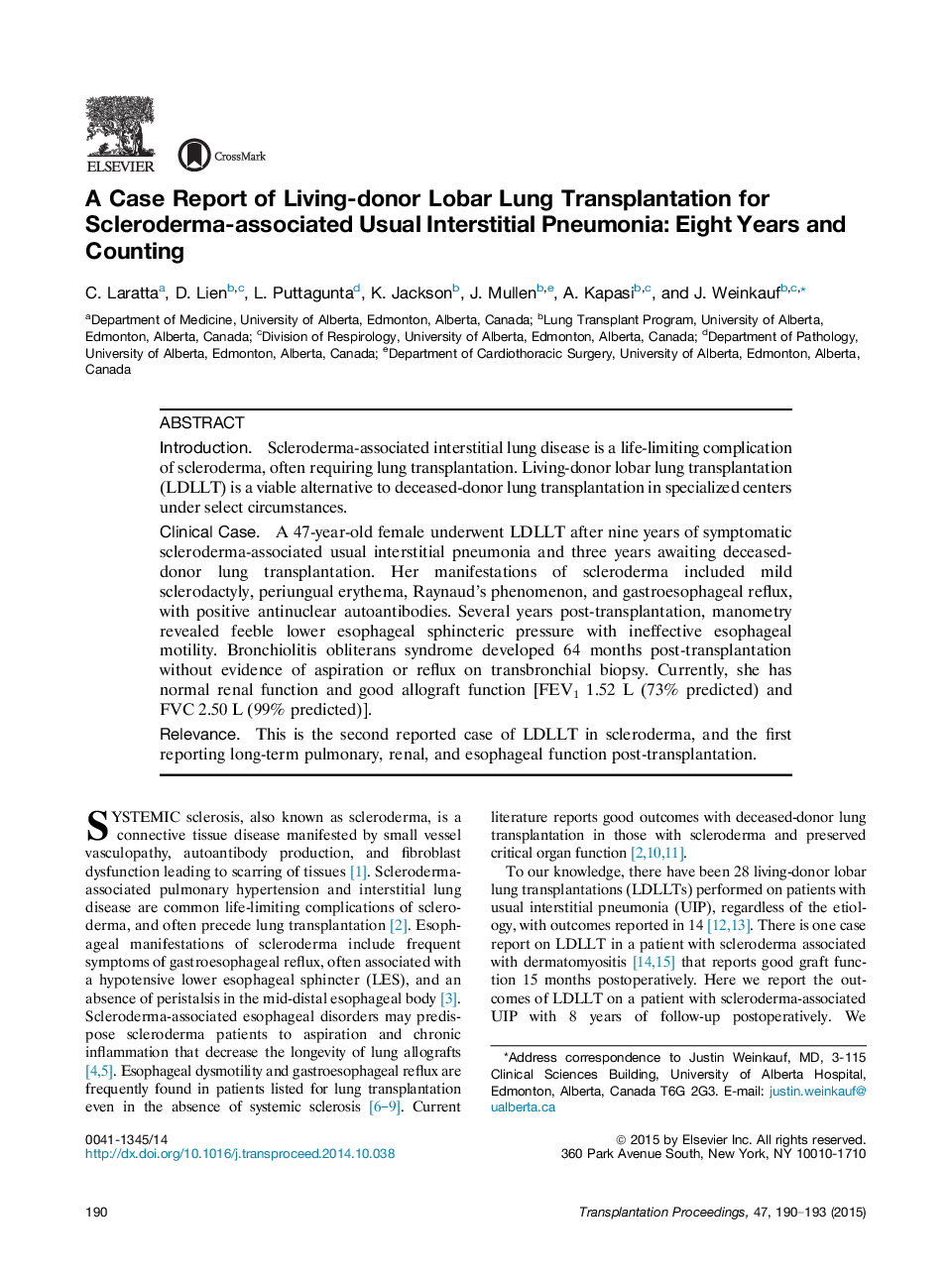| Article ID | Journal | Published Year | Pages | File Type |
|---|---|---|---|---|
| 4256396 | Transplantation Proceedings | 2015 | 4 Pages |
•Living-donor lobar lung transplantation is a life-saving option for patients with scleroderma-associated usual interstitial pneumonia.•Graft function in patients with systemic sclerosis can be preserved 8 years post-transplantation, even with comorbid gastroesophageal reflux.•Patients with systemic sclerosis should not be excluded from consideration of living-donor lobar lung transplantation in select circumstances.
IntroductionScleroderma-associated interstitial lung disease is a life-limiting complication of scleroderma, often requiring lung transplantation. Living-donor lobar lung transplantation (LDLLT) is a viable alternative to deceased-donor lung transplantation in specialized centers under select circumstances.Clinical CaseA 47-year-old female underwent LDLLT after nine years of symptomatic scleroderma-associated usual interstitial pneumonia and three years awaiting deceased-donor lung transplantation. Her manifestations of scleroderma included mild sclerodactyly, periungual erythema, Raynaud's phenomenon, and gastroesophageal reflux, with positive antinuclear autoantibodies. Several years post-transplantation, manometry revealed feeble lower esophageal sphincteric pressure with ineffective esophageal motility. Bronchiolitis obliterans syndrome developed 64 months post-transplantation without evidence of aspiration or reflux on transbronchial biopsy. Currently, she has normal renal function and good allograft function [FEV1 1.52 L (73% predicted) and FVC 2.50 L (99% predicted)].RelevanceThis is the second reported case of LDLLT in scleroderma, and the first reporting long-term pulmonary, renal, and esophageal function post-transplantation.
